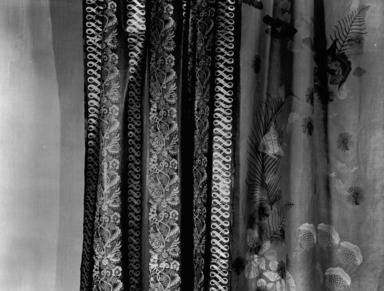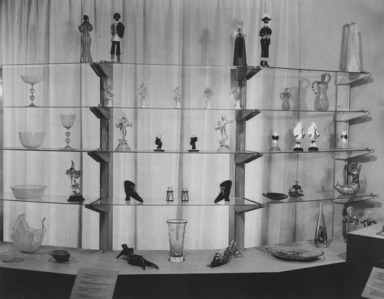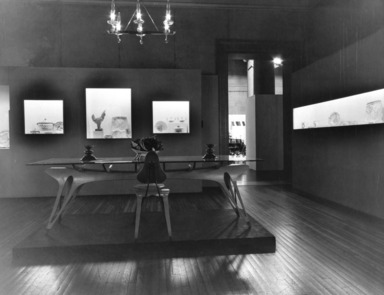

Italy at Work: Her Renaissance in Design Today, November 30, 1950 through January 31, 1951 (Image: PHO_E1949i001_SL3.jpg Brooklyn Museum photograph, 1950)
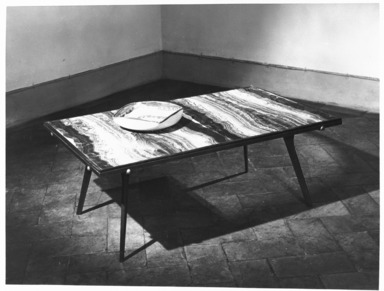
Italy at Work: Her Renaissance in Design Today, November 30, 1950 through January 31, 1951 (Image: PHO_E1949i002.jpg Brooklyn Museum photograph, 1950)

Italy at Work: Her Renaissance in Design Today, November 30, 1950 through January 31, 1951 (Image: PHO_E1949i003.jpg Brooklyn Museum photograph, 1950)
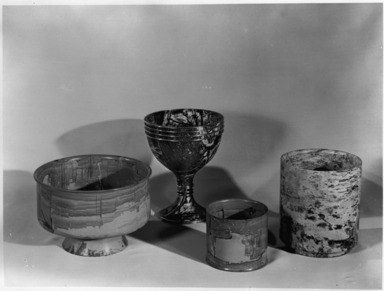
Italy at Work: Her Renaissance in Design Today, November 30, 1950 through January 31, 1951 (Image: PHO_E1949i004.jpg Brooklyn Museum photograph, 1950)
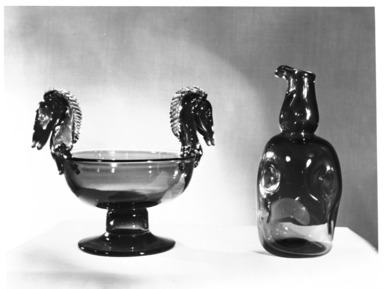
Italy at Work: Her Renaissance in Design Today, November 30, 1950 through January 31, 1951 (Image: PHO_E1949i005.jpg Brooklyn Museum photograph, 1950)

Italy at Work: Her Renaissance in Design Today, November 30, 1950 through January 31, 1951 (Image: PHO_E1949i006.jpg Brooklyn Museum photograph, 1950)
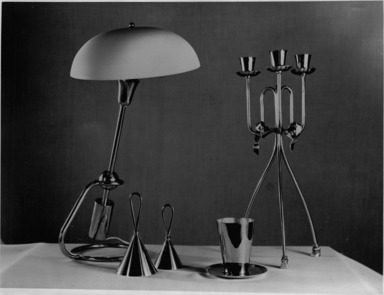
Italy at Work: Her Renaissance in Design Today, November 30, 1950 through January 31, 1951 (Image: PHO_E1949i007.jpg Brooklyn Museum photograph, 1950)
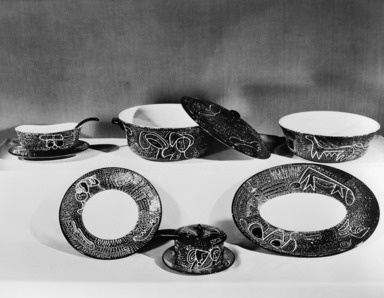
Italy at Work: Her Renaissance in Design Today, November 30, 1950 through January 31, 1951 (Image: PHO_E1949i008_SL3.jpg Brooklyn Museum photograph, 1950)
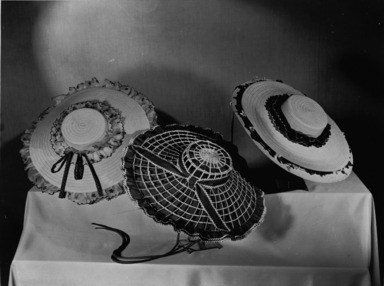
Italy at Work: Her Renaissance in Design Today, November 30, 1950 through January 31, 1951 (Image: PHO_E1949i009.jpg Brooklyn Museum photograph, 1950)
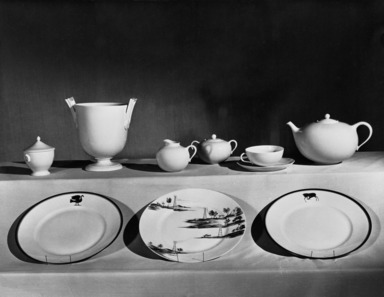
Italy at Work: Her Renaissance in Design Today, November 30, 1950 through January 31, 1951 (Image: PHO_E1949i010_SL3.jpg Brooklyn Museum photograph, 1950)

Italy at Work: Her Renaissance in Design Today, November 30, 1950 through January 31, 1951 (Image: PHO_E1949i011.jpg Brooklyn Museum photograph, 1950)

Italy at Work: Her Renaissance in Design Today, November 30, 1950 through January 31, 1951 (Image: PHO_E1949i012.jpg Brooklyn Museum photograph, 1950)

Italy at Work: Her Renaissance in Design Today, November 30, 1950 through January 31, 1951 (Image: PHO_E1949i013.jpg Brooklyn Museum photograph, 1950)
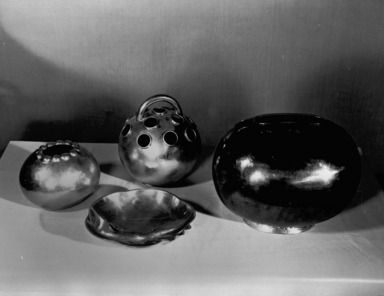
Italy at Work: Her Renaissance in Design Today, November 30, 1950 through January 31, 1951 (Image: PHO_E1949i014.jpg Brooklyn Museum photograph, 1950)
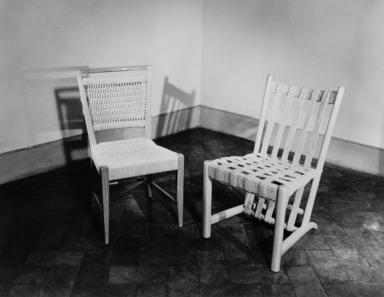
Italy at Work: Her Renaissance in Design Today, November 30, 1950 through January 31, 1951 (Image: PHO_E1949i015_SL3.jpg Brooklyn Museum photograph, 1950)
Italy at Work: Her Renaissance in Design Today
-
November 29, 1950
"As soon as the war ended a small mission went to Italy to survey the situation and to see in what way the assistance could be most effective. A rather large scholarship program in Italian handicraft schools was immediately started; basic material that had become scarce was sent to these schools and to some groups of producers. Committees composed of some of the leading Italian painters, sculptors and architects were set up in various Italian regions to give new ideas and new inspiration to the artisans. Last, but not least, the Italian artisans began to be informed of what the American market demanded and could absorb.
"At the New York end, on April 10, 1947, the House of Italian Handicraft was opened as a permanent showroom. It was in a way the first rehearsal of the exhibition you are going to see tonight. After a couple of years, largely because of the work done by the House, business between Italian producers and American importers became so thriving as to attract the attention of the Export-Import Bank. A public interest corporation called Compagnia Nazionale Artigiana (C.N.A.) was established in Italy, and to this company the Export-Import Bank made available a loan of approximately five million dollars.
“C.N.A. absorbed all the functions of H.D.I., which, in the accomplishment of its task, had spent approximately $370,000. At that stage, I considered that my job had been done. It was no longer a matter of philanthropy. It was business. That had been the aim of H.D.I. all along: To do its work as an unpaid broker, set up its pilot projects, spread carefully its seed money, and then give to business the role that belongs to business.
“What you are going to see tonight, however, is not just a huge commercial showroom set up in a museum. You are going to see some beautiful and useful works of art and at the same time evidence of something that is even more important than art. I will give a concrete instance. The Brooklyn Museum was extremely generous in arranging for this exhibition, but needed additional funds to organize it properly. An appeal was made to the children of Italian descent in the Brooklyn public schools. These children did not need long explanations or much persuasion to bring in their pennies. They knew that this exhibition shows --at her best-- the country their parents came from and that they now can be proud of. What makes them proud is what you will see here: The evidence of an Italy that works her way to recovery, and is not any longer a country soiled by tyranny or humiliated by defeat.
“You are not going to see masterpieces by Leonardo or Michaelangelo tonight. Most of the work has been done by simple artisans, poor, unsophisticated craftsmen. There are thousands and thousands of them in Italy -- people who are haunted by the sense of beauty, and gifted with an almost immemorial skill in expressing with the work of their hands what they feel inside. This exhibition and the whole series of efforts that led to it have been inspired by the belief that the sense of beauty is something contagious -- far more contagious in fact than hatred and prejudice.
Brooklyn Museum Archives. Records of the Department of Public Information. Press releases, 1947 - 1952. 10-12/1950, 132.
View Original -
November 29, 1950
Ecclesiastical art and architecture make up one of the most important divisions of the distinguished and enormous exhibition, “ITALY AT WORK -- Her Renaissance in Design Today”, which opens in the U.S. at the Brooklyn Museum November 29th (until January 31) and subsequent1y tours twelve great museums from coast to coast for three years.
A full-scale private chapel is to be shown -- its altar crucifix having been given the Papal blessing -- as well as vestments, sculptures, lamps, etc.
Every object in the exhibition is modern, having been completed in the year 1950. The distinguished Jury of Selection of four American architects, scholars and museum men, ruled out (of the 2,500 objects which comprise the show) any items which did not demonstrate the new artistic impulses which are causing a Twentieth Century Renaissance in this country liberated from decades of totalitarianism.
BACKGROUND
Over two years in the planning, the exhibition has the sponsorship of the Italian Government, the U.S. State Department, the ECA and other high agencies. Early in 1950, Charles Nagel, architect and Director of the Brooklyn Museum; Meyric R. Rogers, Curator of Decorative and Industrial Arts, the Art Institute of Chicago; Walter Dorwin Teague, New York industrial designer; and Ramy Alexander, Vice President of the Compagnia Nazionale Artigiana of Rome, toured the length and breadth of Italy, selecting furniture, architectural examples, glassware, potteries, etc., which make up the show. For months the objects, as they were completed by their makers, were assembled in the basements of the Ufizzi Galleries in Florence. They have been brought to this country in government supply ships, and it is hoped that they will help, not only to educate the American people in what is being accomplished by this newly reclaimed ally, but also to create a consumer demand that will permanently benefit the Italian workmen.
THE CHAPEL BY ROBERTO MENGHI
Roberto Menghi, the designer of the chapel, was born in 1920 and illustrates the youthfulness running throughout all the Italian arts. His career has already been a distinguished one. Of the chapel he has said:
“1 conceived the chapel as for a family of five or six, and studied its form to evoke concentration and prayer. In both the architecture and the decoration I wanted to renew and interpret -- not revolutionize -- the traditional liturgical requirements. It is not possible, in my opinion, to treat such a theme differently without risking the betrayal of the very subject.”
The crucifix, which is the focus of the chapel, is the work of Luigi Martinotti. Inspired by the great religious paintings of Cimabue, Giotto, Simone Martini and the Sienese artists of the period 1200-1400, Martinotti, who works in enamel on a base of copper, silver or gold, has, after a lifetime of study of the great masters, evolved a personal technique which has won him prizes in competitions all over Europe. Before being sent to America this crucifix received the blessing of His Holiness, Pope Pius XII and it is hoped that it will remain in this country.
THE BEVILACQUA ECCLESIATICAL FABRICS
Possibly the most exquisite items of the whole exhibition are the highly devotional, artistically fresh brocades of pure silver or gold, woven by Luigi Bevilacqua of Venice. So precious are these fabrics that they have been consecrated solely to ecclesiastical use.
Brooklyn Museum Archives. Records of the Department of Public Information. Press releases, 1947 - 1952. 10-12/1950, 130-1.
View Original -
November 29, 1950
With the arrival from Europe this week of the sixth U. S. Government supply ship carrying the enormous packing cases in which the works of hundreds of living Italian artists and craftsmen have been being crated for the last three months, the largest museum show ever brought to this country, entitled “ITALY AT WORK--Her Renaissance in Design Today”, is now being hurriedly cleared, unpacked and mounted by dozens of custom inspectors, art experts, catalogers and workmen, to be ready for its United States opening on November 29th at THE BROOKLYN MUSEUM, where it will remain through January 31st (its only New York City showing) before beginning a three-year tour of leading museums from coast to coast.
EXHIBITION HAS “GOOD NEIGHBOR” IMPORT AND HIGH SPONSORSHIP
Not only the largest, but one of the most significant exhibitions ever brought to the U.S., it has the expressed purpose of introducing the American people to the spiritual and artistic resurgence achieved during five short years of peace and democratic freedoms by a nation which had been under a totalitarian yoke for decades.
Several years in the planning by twelve great American Museums, in conjunction with the Italian C.N.A. (Compagnia Nazionale Artigiana), with the assistance of agencies of both governments, the Exhibition's Honorary Committee is headed for the United States by:
Willard L. Thorpe, Assistant Secretary of State
Cornelius Vanderbilt Whitney, Asst Sec of Commerce
James C. Dunn, U.S. Ambassador to Italy
N. Leon Dayton, Chief, ECA Mission to Italy
Herbert Gaston, Chairmen Export-Import Bank
and for Italy by:
President Alcide De Gasperi
Count Carlo Sforza, Minister of Foreign Affairs
Ivan M. Lombardo, Minister of Foreign Commerce
Giuseppe Togni, Minister of Industry & Commerce
BACKGROUND
Conceived by Meyric R. Rogers of The Art Institute of Chicago, who made a preliminary survey in Italy two summers ago, the 2500 top examples of what Italian artists and artisans are now creating and producing, were selected by a jury of four distinguished American authorities who traveled the length and breadth of Italy for months, visiting studios, factories and workshops. They were
Meyric R. Rogers -- Curator of Decorative and Industrial Arts, The Art Institute of Chicago
Charles Nagel -- Architect; Director, The Brooklyn Museum
Walter Dorwin Teague -- Industrial Designer, New York
Ramy Alexander -- Vice President, Compagnia Nazionale Artigiana, Rome
These four experts on design, combining both modern creative skills of their own and authoritative scholarship, limited their choices to those objects in which new life and artistic directions were discerned. The Italian craftsman has been traditionally one of the most skillful and exuberant of idea in modern history. It was the Italian artist and intellectual who kindled the entire Renaissance. During the long years of the Victor Emmanuel and Mussolini periods, their great artistry hit an all-time low. But, as this exhibition is hoping to demonstrate, it was only dormant, not dead. “This new Italian renaissance”, says Mr. Nagel, “is not dissimilar to that which happened in the arts and crafts of Scandinavia after the last war. This, however, I find more impressive because it also shows what an individualistic, freedom-loving people can do when freedom is restored to them. It also shows what not only the example of democracy can give but also, most practically, what our taxes, supporting democratic aspirations abroad, have begun to produce in one country. Finally, to me, it is good to have another proof that the Italian people (if not always their governments) belong to our same family of nations. It is cheering to see that the majority of even those Italians who received their whole education under Fascism are still related spiritually to those men and women which Italy has sent to become citizens of the United States.”
SCOPE OF ITALY AT WORK
The objects of the exhibition varying in size from full-scale interiors to tiny jewels, are centered around five important rooms, designed by the five men the Jury of Selection considered the most significant architects in Italy today. Their works were chosen from plans submitted and have been specially constructed for this show. As has been the case in Italy for centuries, the architect has also designed the furnishings of a room to the smallest detail and these rooms are complete to the last ashtray of the architect-master-designer's providing. The five architects and their rooms are;
Five interiors:
Foyer for a Marionette Theatre by Fabrizio Clerici, Rome
Terrace Room by Luigi Cosenza, Naples
Private Chapel by Roberto Menghi, Milan
Living-dining-sleeping Room for moderate income, Carlo Mollino, Turin
Dining Salon (top-bracket income) by Gio Ponti, Milan
The individual exhibits include peculiarly Italian arts which have not been generally known in this country such as pietra dura (hardstone work -- an exceedingly astute inlaywork in stone), intarsia (wood inlay), etc. The general classifications of these objects includes:
furniture womens accessories metalwork strawwork
ceramics ecclesiastical art glassware bookbindings
enamels lighting fixtures typewriters toys
textiles leatherwork mosaics tiles
YOUTH -- NO “OLD MASTERS”; NO “OLD” MEN
“As a working title”, says Mr. Nagel of the Brooklyn Museum, “we have been referring to this as ‘the Italian Show’. Actually nothing could be more misleading to the general public. ‘Italian Show’ connotes --and should-- to most Americans an exhibition of Fourteenth to Eighteenth Century paintings and sculpture. We jurors were turning our backs on anything as late as the l930’s in style and, with possibly one or two exceptions, everything in our Italian Show was completed in 1950. The men who have created these works are young too. Take, for example, the five architects represented. Gio Ponti is the oldest (he is already world-known for his great elegance, taste and wit). Ponti only received his architectural degree from the Politecnico of Milan in 1921. And Roberto Menghi, who designed the chapel was only born in 1920. It has therefore seemed most fitting that the designer who is creating the montage and background for this young show, while it is being exhibited at the Brooklyn Museum should be a man whose name is synonymous with stream-lined trains and the latest in American technics -- Walter Dorwin Teague”.
EVERY OBJECT IN SHOW CAN BE OWNED AT END OF 3-YEAR TOUR
SIMILAR OBJECTS TO BE “MERCHANDISED” BY H.I.H.
Although the interest of the Museums is cultural and educational, they are also cooperating to the end that the Italian artist may find U.S. markets for the works he produces (which do not conflict with any American manufactures). Accordingly the House of Italian Handicrafts (H.I.H.) a subsidiary of the C.N.A. (Compagnia Nazionale Artigiana) which has fostered this rebirth since the end of the war, has arranged to “figure” a price (makers’+transportation+duty+service) on every object in the show -- be it the theatre lobby or a desk lamp. They will also furnish information as to how similar objects can be purchased either by individuals or by stores in the United States.
ROUTE
1) Nov. 29, 1950 - Jan. 31, 1951
BROOKLYN, NEW YORK [illegible]
Sidney W. Davidson, [illegible]
Charles Nagel, Director [illegible]
2) Mar. 7, 1951 - May 7, 1951
CHICAGO, ILLINOIS -- Art Institute of Chicago
Chauncey McCormick, President
Daniel Catton Rich, Director
3) June 18, 1951 - July 31, 1951
SAN FRANCISCO -- M.H. de Young Memorial Museum
Herbert Fleischacker, President
Walter Heil, Director
4) Sept. 5, 1951 - Oct. 21, 1951
PORTLAND, OREGON -- Portland Art Museum
Dr. Wm. K. Livingston, President
Thomas C. Colt, jr., Director
5) Nov. 27, 1951 - Jan. 8, 1952
MINNEAPOLIS -- Minneapolis Inst. of Fine Arts
Russel A. Plimpton, Director
6) Feb. 13, 1952 - Mar. 27, 1952
HOUSTON, TEXAS -- Museum of Fine Arts
J.W. Link, Jr., President
James Chillman, Jr., Director
7) May 4, 1952 - June 14, 1952
ST. LOUIS -- City Art Museum of St. Louis
Daniel K. Catlin, President
Perry T. Rathbone, Director
8) Sept. 7, 1952 - Oct. 22, 1952
TOLEDO, OHIO -- Toledo Museum of Art
C. Justus Wilcox, President
Blake-More Godwin, Director
9) Nov. 27, 1952 - Jan. 8, 1953
BUFFALO, N.Y. -- Albright Art Gallery
Seymour H. Knox, President
Edgar C. Schenk, Director
10) Feb. 12, 1953 - Mar. 27, 1953
PITTSBURGH, PENN. -- Carnegie Institute
James M. Bovard, President
Wallace Richards, Director
11) May 1, 1953 - June 15, 1953
BALTIMORE -- Baltimore Museum of Art
J. G. D. Paul, President
Adelyn D. Breeskin, Director
12) Oct. 1, 1953 - Nov. 15, 1953
PROVIDENCE, RHODE ISLAND -- Museum of Art
Mrs. Murray S. Danforth, Chairman
Roberta M. Alford, Acting Director
Brooklyn Museum Archives. Records of the Department of Public Information. Press releases, 1947 - 1952. 10-12/1950, 123-6.
View Original -
November 29, 1950
NOTE: For your convenience, we are sending along a “brief” of the talk Dr. Max [illegible] Ascoli will make at the opening of the Brooklyn Museum Exhibition, “ITALY AT WORK". Dr. Ascoli may be quoted, of course, and this states the objectives [illegible] show which, it is hoped, will “help the Italians help themselves”. Dr. Ascoli has a personal record of standing out against Fascism; he is also a well-known philanthropist and, himself, organized the first efforts to revive the handicrafts and provide the artisans with materials. This also gives a good [illegible] of the part played by the Export-Import Bank. (As we have mentioned in previous memorandum, the project is an excellent example of ECA and the Marshall Plan at work.)
The talk will be made at the dinner (7 p.m. ) which precedes the formal opening at 8:45 p.m. at THE BROOKLYN MUSEUM, Eastern Parkway. Another principal speaker’ will be the Italian Ambassador, the Hon. Alberto Tarchiani (representing President De Gasperi, head of the Honorary Committee of the Exhibition). The Tarchiani notes are not yet available but we will get them to you tomorrow morning if desired. I.B.
______________________________________________
“The exhibition that is going to be opened tonight will show you some samples of ‘Italy at Work'. It also shows what Italian skill and American vision can achieve, when they are directed toward a common aim. Since the start of the first project that ultimately led to this exhibition, the aim has always been the same: To improve the well-being of the Italians who know how to make beautiful and useful things by bringing their products to enrich life in American homes.
“Toward the end of 1944 when the news was coming in about the devastation that the war had brought to Italy, quite a number of Americans were asking themselves in anguish what could be done to bring some relief to that country. I happened somehow to stumble onto the idea of something that could be done. But to have an idea is of little use unless you find other people who are willing to work with you and carry it through. I had that good fortune.
“Briefly, the idea was to apply the hardheaded principles of American philanthropy to the rehabilitation of Italian handicraft production. After having been separated for so long by the war, Italian handicraft producers and American consumers had to become aware of each other once more. Before the business brokers could begin their useful task, unpaid brokers had to go to work to pave the way.
“In December ‘44, Handicraft Development, Inc., (H.D.I.), a non-profit organization, was established. The founders were Paolino Gerli, Almerindo Portfolio, Enrico Pavia, my wife and myself. Later Joseph Di Giorgio and Nelson Rockefeller joined the original group. I am particularly glad to point out the name of Nelson Rockefeller, for he had no particular connection with Italy but is always ready to join a new project that gives people a chance to help themselves.
ROUTE
1) Nov. 29, 1950 - Jan. 31, 1951
BROOKLYN, NEW YORK -- Brooklyn Museum
Sidney W. Davidson, Chm. Gov.[?] Com.
Charles Nagel, Director
2) Mar. 7, 1951 - May 7, 1951
CHICAGO, ILLINOIS -- Art Institute of Chicago
Chauncey McCormick, President
Daniel Catton Rich, Director
3) June 18, 1951 - July 31, 1951
SAN FRANCISCO -- M.H. de Young Memorial Museum
Herbert Fleischacker, President
Walter Heil, Director
4) Sept. 5, 1951 - Oct. 21, 1951
PORTLAND, OREGON -- Portland Art Museum
Dr. Wm. K. Livingston, President
Thomas C. Colt, Jr., Director
5) Nov. 27, 1951 - Jan. 8, 1952
MINNEAPOLIS -- Minneapolis Inst. of Fine Arts
Russel A. Plimpton, Director
6) Feb. 13, 1952 - Mar. 27, 1952
HOUSTON, TEXAS -- Museum of Fine Arts
J.W. Link, Jr., President
James Chillman, Jr., Director
7) May 4, 1952 - June 14, 1952
ST. LOUIS -- City Art Museum of St. Louis
Daniel K. Catlin, President
Perry T. Rathbone, Director
8) Sept. 7, 1952 - Oct. 22, 1952
TOLEDO, OHIO -- Toledo Museum of Art
C. Justus Wilcox, President
Blake-More Godwin, Director
9) Nov. 27, 1952 - Jan. 8, 1953
BUFFALO, N.Y. -- Albright Art Gallery
Seymour H. Knox, President
Edgar C. Schenk, Director
10) Feb. 12, 1953 - Mar. 27, 1953
PITTSBURGH, PENN. -- Carnegie Institute
James M. Bovard, President
Wallace Richards, Director
11) May 1, 1953 - June 15, 1953
BALTIMORE -- Baltimore Museum of Art
J. G. D. Paul, President
Adelyn D. Breeskin, Director
12) Oct. 1, 1953 - Nov. 15, 1953
PROVIDENCE, RHODE ISLAND -- Museum of Art
Mrs. Murray S. Danforth, Chairman
Roberta M. Alford, Acting Director
Brooklyn Museum Archives. Records of the Department of Public Information. Press releases, 1947 - 1952. 10-12/1950, 109-10.
View Original -
November 27, 1950
LARGEST MUSEUM SHOW EVER BROUGHT TO U.S. HAS NATIONAL PREMIERE AT BROOKLYN MUSEUM
FORMAL INAUGURATION WEDNESDAY EVENING (NOV. 29) WITH ITALIAN AMBASSADOR PRESENT
Open to General Public Thursday, November 30th through January 31st
To Tour Twelve Major Cities from Coast to Coast for Three Years
FIRST COMPREHENSIVE VIEW OF POST-WAR SPIRITUAL AND INDUSTRIAL REBIRTH IN ITALY WHICH HAS BEEN ACHIEVED UNDER DEMOCRATIC GOVERNMENT -- WITH U.S. ECONOMIC AID
Many Types of Wares Being Introduced to American Public First Time
Range in Size from Full-scale Interiors to Women's Accessories & Toys;
In Cost from Unique Luxury Items to Moderate-priced Household Furnishings
SIMILAR OR IDENTICAL ITEMS TO BE MADE AVAILABLE BY LEADING US. RETAILERS --- CAN HELP ITALY NARROW DOLLAR GAP; LITTLE COMPETITION WITH U.S. INDUSTRY
"ITALY AT WORK", the Exhibition of Contemporary Italian Decorative and Industrial Arts, the largest museum show ever brought to this country from abroad, will have its U.S. premiere at THE BROOKLYN MUSEUM, opening to the general public Thursday, November 30th, following a special invitational preview Wednesday evening, November 29th, at which the Italian Ambassador to the United States, the Honorable Allberto Tarchiani, will be guest of honor.
FORMAL OPENING
The inauguration of this significant exhibition on Wednesday evening, Nov. 29th, will be preceded by a formal dinner (at 7 p.m.) for approximately 200 persons, given in the Sculpture Court of the Brooklyn Museum by Adrian Van Sinderen, President of the Brooklyn Institute of Arts and Sciences, and Mrs. Van Sinderen, to be followed by a reception and viewing at 8:45 p.m. There will be short addresses by Ambassador Tarchiani (representing the Hon. Alcide De Gasperi, President of the Council of Ministers of the Italian Republic, and head of the Honorary Committee of the Exhibition) and by Dr. Max Ascoli, Italian-born American philanthropist who, with Mrs. Ascoli, shortly after the war, with private funds, set up CADMA, a non-profit organization which fostered the beginnings of the crafts movement and was subsequently expanded into the C.N.A. (Compagnia Nazionale Artigiana) through which official U.S. aid from the Export-Import Bank was channeled.
TO BE SHOWN IN 12 LEADING U.S. MUSEUMS UNTIL END OF 1953
Organized as a cooperative effort by twelve leading U.S. museums (of which the Brooklyn Museum was chosen because of its leadership in the fields of decorative and industrial design), and aided by the Italian Government, the Compagnia Nazionale Artigiana of Rome and various U.S. agencies, including the E.C.A. and the Department of State, this important exhibition will tour the United States for three years. Following its New York showing at The Brooklyn Museum, which ends January 31st, it will visit in turn: Chicago, San Francisco, Portland, Minneapolis, Houston, St. Louis, Toledo, Buffalo, Pittsburgh, Baltimore and Providence. (See last page of this release for details.)
2500 OBJECTS CHOSEN BY DISTINGUISHED AMERICAN JURY
OVER TWO YEARS IN PLANNING AND ASSEMBLING
Originally conceived by Meyric R. Rogers of the Art Institute of Chicago, who, on post-war visits to Europe had been particularly impressed by the great spiritual, as well as political and economic recovery made by the Italians after decades of debilitating totalitarianism, the 2500 objects which make up the show were selected by an important Jury of American experts in design who spent several months early this year touring thousands of miles, the length and breadth of Italy, visiting some 250 artisans and craftsmen in their frequently obscure working places. The members of the Jury of Selection were:
MEYRIC R. ROGERS, Curator of Decorative and Industrial Arts, The Art Institute of Chicago
CHARLES NAGEL, Architect; Director, The Brooklyn Museum
WALTER DORWIN TEAGUE, Industrial Designer, New York
RAMY ALEXANDER, Vice-President, Compagnia Nazionale Artigiana, Rome (who has just arrived from Italy to attend the opening)
BASIS OF SELECTION -- CATEGORIES REPRESENTED
"The exhibition is contemporary both in date and in feeling", according to Charles Nagel of the Brooklyn Museum. "Every item, almost without exception, was created in 1950. We ruled out everything shown us which was purely traditional in design. With the requirements that the design of each object be intrinsically fine and that the solution to each problem be fresh and now, we then admitted any fine artifact regardless of the humbleness of its use or the simplicity of its materials.
"In many instances, the Italian designer has made a virtue of the post-war limitations of luxurious raw materials. The same artistry that was once devoted to vessels of gold and silver has now been applied to works in copper and brass -- with the advantage, in tune with modern times any place in the world, that good design can be owned by almost anyone.
"I found it particularly interesting that a factory which had never made anything except ropes has suddenly, out of the same raw hemp, created handsome fabrics -- which I think will be a delight to Americans. Similarly the glassworks of Empoli which, for generations, have devoted themselves solely to making bottles for Chianti, have burst forth with table and decorative glasswares, of the same green glass but of unexpected beauty and originality.
The exhibition will be centered around five full-scale interiors, commissioned by the Jury from Italy's leading architects. Each room is completely appointed with furnishings of the architects' design or selection -- the roles of architect and interior decorator having gone together throughout Italian history.
They are: Foyer for a Marionette Theatre by Fabrizio Clerici of Rome
Terrace Room by Luigi Cosenza of Naples
Private Chapel by Roberto Menghi of Milan
All-Purpose Room (for moderate income) by Carlo Mollino of Turin
Dining Salon by Gio Ponti of Milan
The ecclesiastical and liturgical materials are of considerable significance. In addition to such particularly Italian arts as "pietra dura" (hard-stone inlay) and "intarsia" (inlaid wood), other crafts to be represented are:
Furniture
Metalwork
Leatherwork
Straw-work
Ceramics
Glassware
Mosaics
Bookbindings
Enamels
Office Machines
Lighting Fixtures
Toys
Textiles
Ironwork
Women's Accessories
Tiles
EXHIBITION SETTING AT BROOKLYN MUSEUM BY DISTINGUISHED AMERICAN DESIGNERS
Some 10,000 square feet of the imposing entrance hall of the Brooklyn Museum and its ground-floor galleries have for weeks been undergoing alterations end redecoration to display the exhibits under the general supervision of Walter Dorwin Teague, leading industrial designer; and by Victor Proetz, outstanding American architect and furniture designer; Michelle Murphy, Design Consultant of the Industrial Division of the Brooklyn Museum and staff members. Says Mr. Teague:
"In planning a setting for the ITALY AT WORK exhibition, I selected a color scheme which I think will have a nostalgic interest for all those who know and live Italy. The dominant notes are cerulean blue of the ItalIan sky and a clear light yellow that should recall Italian sunlight, with accents of the pale burnt orange which appears so often in architecture and especially in the sails of the boats on the Bay of Venice.
"Many of the objects in the collection are intended for outdoor use, and we hope that all of them will look well in this outdoor setting. In displaying such a great variety of items, running from costume jewelry through ceramics and textiles to industrial products and furnished rooms, it is necessary to use a wide variety of display techniques. This I think the staff of the Brooklyn Museum has done with great skill and the collection as a whole should be exciting in its diversity."
MERCHANDISING IN THE UNITED STATES
Although the primary interest of the Sponsoring Museums is educational, to give Americans their first comprehensive view of a new cultural renaissance burgeoning in an old civilization, they also hope that those items will arouse a consumer demand for similar objects that will permanently benefit the Italian workmen -- and serve to cement our diplomatic and economic relations with Italy.
Every object in the exhibition, from the greatest to the smallest, will be given an approximate retail price in the U.S. by the H.I.H. (House of Italian Handicrafts, a subsidiary of the C.N.A.). Some of the items are already on sale here, and more are being imported by such leading stores as Lord and Taylor and Gimbel Bros. in Manhattan; Abraham and Straus, Brooklyn; Stix, Baer and Fuller, St. Louis; Marshall Field, Chicago; The Halle Bros., Cleveland; McCurdy's, Rochester; The Wm. Hengerer Co., Buffalo; Jackson's, Oakland; Meier and Frank, Portland, etc.
The Honorary Committee
Hon. Alcide De Gasperi - President of the Council of Ministers of the Italian Republic
Hon. Count Carlo Sforza - Italian Minister of Foreign Affairs
Hon. Ivan M. Lombardo - Italian Minister of Foreign Commerce
Hon. Giuseppi Togni - Italian Minister of Industry and Commerce
Hon. Willard L. Thorpe - U.S. Asst. Sec. of State for Economic Affairs
Hon. Cornelius Vanderbilt Whitney - U.S. Asst. Sec. of Commerce
Hon. James Clement Dunn - U.S. Ambassador to Italy
Hon. M. Leon Dayton - Chief, E. C. A. Mission to Italy
Hon. Herbert Gaston - Chairman of the Board of the Export-Import Bank
Dr. Max Ascoli - Publisher, Editor and Founder, Handicrafts Development, Inc.
Winthrop Aldrich - President, Chase National Bank
David Freudenthal - President, House of Italian Handicrafts, Inc.
Chauncey McCormick - President, Board of Trustees, Art Institute of Chicago
Sidney W. Davidson - Chairman of the Governing Committee, Brooklyn Museum
Hon. James D. Zellerbach - Former Chief, E. C. A. Mission to Italy
Committee of Organization
Hon. Ivan M. Lombardo - Chairman (Italian Minister of Foreign Commerce)
Meyric R. Rogers - Executive Secretary (Curator of Decorative and Industrial Arts, The Art Institute of Chicago)
Ramy Alexander - Regional Secretary for Italy (Vice President, Compagnia Nazionale Artigiana)
Paul Hyde Bonner - (Special Assistant to Chief E.C.A. Mission to Italy)
Dr. Charles Rufus Morey - (Cultural Attache, U.S. Embassy, Rome, Italy)
Daniel Catton Rich - (Director, The Art Institute of Chicago)
Charles Nagel - (Director, Brooklyn Museum of Art)
Committee of Selection
Meyric R. Rogers - Curator of Decorative and Industrial Arts, The Art Institute of Chicago
Charles Nagel - Director, The Brooklyn Museum
Walter Dorwin Teague - Industrial Designer, New York
Ramy Alexander - Vice President, Compagnia Nazionale Artigiana, Rome
Brooklyn Museum Archives. Records of the Department of Public Information. Press releases, 1947 - 1952. 10-12/1950, 095-8.
View Original -
December 19, 1950
Charles Nagel, director of the Brooklyn Museum, received the Star of Italian Solidarity from the Italian Government in ceremonies held yesterday (Thursday, Dec. 18, 5 p.m.) at the Italian Consulate, 690 Park Ave., Manhattan.
Baron Carlo De Serrariis Salzano, Italian Consul General in New York, conferred the honor in recognition of Mr. Nagel’s part in bringing to this country the first exhibition of Italian crafts following World War II. The exhibition served to stimulate interest in Italy’s trade possibilities and resulted in successful commercial attention for Italian craftsmen from large stores in the United States.
Mr. Nagel, as a member of the jury of selection, spent the Spring of 1950 in Italy selecting material for the exhibition “Italy at Work” which opened at the Brooklyn Museum in the Fall of the same year. The show was sent on a three-year tour to 12 other museums in the country and is now at the Albright Gallery, Buffalo, following which it will go to museums in Baltimore and Providence before being dispersed.
Mr. Nagel, who is also president of the Association of Art Museum Directors, in accepting the decoration, stated:
“I feel very happy and honored at receiving the Star of Italian Solidarity from the Italian Government. I feel this is a real recognition of the importance and success of the great exhibition of “Italy at Work” which was designed to make known in this country the wonderful work being done in all media by the Italian craftsmen of today and thereby to help improve the economic situation of a nation struggling to recover from war.”
Brooklyn Museum Archives. Records of the Department of Public Information. Press releases, 1947 - 1952. 10-12/1949, 129.
View Original -
November 29, 1950
In the distinguished exhibition, “ITALY AT WORK” Her Renaissance in “Design Today”, which has its U.S. premiere at the Brooklyn Museum (Nov. 29-Jan. 31) and subsequently tours the country for three years, one section is devoted to WOMEN’S ACCESCORIES and FABRICS which--like all of the other exhibits, whether architectural, sculptural or mechanica1--show the inexhaustible invention and artistry of the Italian craftsman and designer.
WOMEN’ S ACCESSORIES
High fashion as well as native crafts are represented, ranging from the costume jewelry of Eva Vedres Carocci and Countess Luciana of Rome or the elegant shoes of the famed Florentine makers to hand-blocked jupons by Kowaliska of Positano.
These accoutrements of fashion will be changed seasonally during the progress of the exhibition across America. Many of these whimsica1 and artful costume jewels; slimmest of all umbrellas; most exquisite slippers that ever trod a silk rug have found important markets in the great houses of Paris but are little known in the U.S. Among the designers and makers represented are:
Carocci, Rome
Berengo-Gardin, Murano
Paoli, Florence
Luciana, Rome
La Tessatrice Dell’Isola, Capri
Myricae, Rome
Fratti, Milan
Galotti, Capri
Ferragamo, Florence
Barbisetti, Rome
Gucci, Florence
Valentino, Florence
THE FABRIC STORY
Fabrics show the same wide divergency in style and intent. One of the newest groups to America will be the hemp fabrics. Some of the hemps for draperies are almost transparent, giving, against the light and at a distance, the illusion of theatrical gauze. Typical of this whole 20th Century Italian Renaissance is the fact that they are woven in a factory which, before the war, made only ropes.
At the other extreme are glorious brocades woven with true gold and silver strands by Luigi Bevilacqua of Venice -- some of such splendor that they have been consecrated to ecclesiastical use only. Among the makers are:
Myricae, Rome
Linificio-Canopificio, Milan
M.I.T.A., Nervi
Fede Cheti, Milan
Luigi Bevilacqua, Venice
Eugenio Fegarotti
Emilia Bellini, Florence
Mariuccia Quaia, Venice
Kowaliska
There are many surprises in the combinations of printing, embroidery and blocking on unexpected materials. Little known is the fact that many Italian tweeds are sold under British trademarks just as the Italian jewels are sold by Paris names.
Brooklyn Museum Archives. Records of the Department of Public Information. Press releases, 1947 - 1952. 01-03/1951, 014.
View Original -
June 28, 1950
A special performance on Wednesday, June 28, of Luigi Pirandello's "Right you Are! (If You Think You Are)” by The [unclear] will celebrate the 83rd anniversary of the [unclear] great Italian playwright and profits from the performance will be contributed to a fund to mount and present the first comprehensive collection of contemporary Italian Industrial and Decorative Arts, collected under the sponsorship of the United States Government (through ECA) and the Italian Government (through Compagnia Nazionale Artigiana). The off-Broadway group, which has already attracted attention with its production of the Pirandello classic, is giving the benefit performance as a means of serving the Italian people in the broadest way. The exhibit was chosen because it will stimulate Italian handicrafts and increase employment. The performance will be given in the Kaufman Theatre of the Y.M.H.A., 92nd Street and Lexington Avenue at 8:40 p.m.
Sponsoring the special birthday performance are Marta Abba, celebrated Italian actress and life-long friend of Pirandello, Armina Marshall, Consul General Aldo M. Mazio, Dr. Saul Colin, Aline Bernstein, Marc Connolly, Lisa Sergio, Richard Watts, Jr.; Joseph T. Shipley; Elliott B. Macrae, President of E.P. Dutton and Mr. and Mrs, Charles Nagel, Jr.
Mr. Nagel was one of the distinguished jury sent on a three-month tour of Italy to select the various examples of Italian Industrial art, which will tour the United States during the next two years. Others on the jury were Meyric R. Rogers, Curator of Decorative Arts of the Chicago Art Institute, Walter Dorwin Teague, well-known Industrial Designer and, representing Italy, Ramy Alexander, Vice-President of Conpagnia Nazionale Artigiana. Mr. Nagel is Curator of the Brooklyn Museum, which will be the first of twelve leading art galleries in America to mount and present the collection of 2500 objects selected by the jury. Although ECA funds were made available for travel and the survey, they cannot be spent in the United States and approximately $25,000 will be needed for proper presentation of the exhibit, which opens November 22 at the Brooklyn Museum.
Brooklyn Museum Archives. Records of the Department of Public Information. Press releases, 1947 - 1952. 07-09/1950, 071.
View Original -
November 9, 1950
ITALIAN AMBASSADOR ALBERTO TARCHIANI, REPRESNTING DE GASPERI AND ITALIAN REPUBLIC OPENS EXHIBITION OF CONTEMPORARY ITALIAN ARTS AND CRAFTS AT THE BROOKLYN MUSEUM
________
SAYS GIGANTIC EXHIBITION IS MONUMENT TO “ATMOSPHERE OF FRIENDSHIP AND COOPERATION THAT HAS BEEN REESTABLISHED BETWEEN OUR TWO COUNTRIES IN LAST FIVE YEARS”
CITES “NOBLE INITIATIVE” OF DR. MAX ASCOLI OF NEW YORK “AS REPRESENTATIVE OF A GRATEFUL GOVERNNENT” FOR ASCOLI ‘S WORK IN POST-WAR RECOVERY OF ITALY
________
NOTE: For your convenience we are sending on advance copy of the remarks of Ambassador Tarchiani who will officially open the exhibition, ITALY AT WORK at 8:45 p.m. tonight (Wed. Nov 9th). It may, of course, be quoted. The principal address of the evening will be by Dr. Max Ascoli which was sent out earlier in the day. A duplicate copy is attached for reference. I.B. & R.P.
“It is very gratifying to me to participate in the inauguration of this exhibition of products of Italian handicraft, as representative of the Italian Government, and in particular of the Minister of Foreign Trade, Mr. Lombardo. This exhibition has been made possible by the common efforts of Dr. Max Ascoli, forerunner in the initiative of the Compagnia Nazionale Artigiana, of Minister Lombardo, who obtained the contribution of the Italian Government, of Mr. Rogers, of Mr. Nagel, and of other directors of American museums.
“The realization of this exhibition is also one of the results of the atmosphere of friendship and cooperation that has been reestablished and developed to the present stage between our two countries in the last five years. I am glad to remember now, and to mention here, when we see its materialized effects, a letter that Max Ascoli wrote me in Rome more than five years ago, at the end of 1944, concerning his generous purpose of contribution to the reconstruction of Italy through the revival of Italian handicraft production and exportation. I answered that his was certainly a sound and practical idea, although very costly and difficult to put into effect. Fortunately Dr. Ascoli persisted, and the House of Italian Handicrafts was created and expanded in New York.
The considerable achievements proved by the exhibition which we are about to inaugurate are natural consequences of that noble initiative, and Max Ascoli must be heartily thanked by me in a two-fold way -- as a representative of my grateful government, and also personally as an Italian and as a friend.
"It is not for me to extol this exhibition in its details. I am sure that it will speak for itself here and in several other American cities in its perigrinations across the continent, thereby contributing to the consolidation and the multiplication of the links of sympathy and collaboration in every field between Italy and the United States. I am therefore highly pleased and honored to open, in the name of the Italian Government and the Italian artisans, this exhibition of the Compagnia Nazionale Artigiana in America.”
Brooklyn Museum Archives. Records of the Department of Public Information. Press releases, 1947 - 1952. 10-12/1950, 129.
View Original -
November 30, 1950
Because of its leadership in the field of Industrial Art, and its location in the New York metropolitan area, The Brooklyn Museum has been chosen to undertake the initial showing and official opening on November 22, 1950 of one of the most outstanding exhibits ever brought to this country from Europe. After its showing in Brooklyn the exhibit will be shown at the Art Institute of Chicago, and several museums in important centers throughout the country: San Francisco, Houston, Minneapolis, St. Louis, Toledo, Baltimore, etc.
BACKGROUND
During the summer of 1949 a preliminary survey was made in Italy by Meyric R. Rogers, Curator of Decorative and Industrial Art at the Art Institute of Chicago, with a view to holding in various key cities in America an exhibition of contemporary Italian industrial arts. Mr. Rogers conferred with Mr. Ramy Alexander of the Compagnia Nationale Artigiana, and under the latter’s personal guidance visited studios, workrooms, schools and shops in Rome, Naples, Florence, Bologna, Milan, Turin, Bergamo, Venice, Murano and Faenza. These visits covered the work of typical producers of furniture, woodwork, metalwork, ceramics, glass, textiles, leather, jewelry and objects in various special materials peculiar to Italian craftsmanship. Contact was also made with leading architects and designers to consider the difficulties and possibilities involved in selecting and adapting Italian production to foreign markets.
The prospect of such an exhibition in the United States met with enthusiastic response on all sides. Plans were greatly aided by the whole-hearted support of the Italian Minister of Commerce and Industry, Ivan Matteo Lombardo, who has promised to aid the project by putting all the material selected at the disposal of the exhibition gratis, and providing for suitable packing and insurance. American official aid to the project has also been assured through the undertaking of the transportation and expenses in Italy of the Jury of Selection, by the United States Economic Cooperation Administration. Our Government has also offered to transport the exhibition in Navy supply ships.
JURY OF SELECTION
There will be a Jury of Selection of five qualified judges, of which three will be particularly informed as to the decorative and industrial art situation in the United States, and two others experienced in the same field in Italy. The number of objects to be selected will total about 1200 items, including five interiors by leading architects and designers. The American jurors are:
Meyric R. Rogers, Curator of Decorative and Industrial Art of the Art Institute of Chicago
Charles Nagel, Director of The Brooklyn Museum
Walter Dorwin Teague, distinguished Industrial Designer
SPONSORSHIP
It is expected that an official and honorary sponsorship for this venture will be set up including Mr. de Gasperi, head of the Italian Government; Mr. James Dunn, United States Ambassador to Italy; Mr. Zellerbach, head of the American E.C.A. Mission to Italy; the Italian Ambassador to the United States, and other persons of high standing in both countries, and, of course, the Presidents and directors of the cooperating museums. The success of the venture should justify the confidence placed in it by both the American and Italian governments, and it is particularly important that it be realized throughout the United States that this is not just another outstanding art exhibition, but an important demonstration of Italy’s success in making a courageous recovery from the disasters of war, and of the value of that country’s contribution in terms of practical production in the industrial art field.
NEED FOR COOPERATION
To put on effectively the official opening of an exhibition of this scope and importance will, frankly, require the contribution of funds to supplement those from regular endowments available to the Museum for ordinary exhibition purposes. To do the kind of a job the occasion deserves, the Museum will require generous participation by sponsors and by citizens particularly interested in helping Italian-American relations. Upon the Brooklyn Museum rests the responsibility of planning national publicity, special installation equal to the excellence of the material to be shown, opening ceremonies worthy of the project’s distinguished sponsorship, suitable publications, and musical, dance and motion picture programs which should run concurrent with the two months’ showing of the exhibition.
BROOKLYN’S RESPONSIBILITY
It cannot be too strongly emphasized that these are heavy responsibilities which the Brooklyn Museum is endeavoring to undertake to insure the success of a national project, not alone in our country’s greatest metropolis, but wherever the exhibition is shown in the United States. This project has been conceived with an imagination and broad vision that has already enlisted official aid, without which the project would not be possible. But, we need, in addition and confidently expect to get, the aid and support of those Italian-Americans who are sure to feel a special interest in a venture designed to be of practical assistance to the Italian craftsman and who will wish to make its presentation in New York City an impressive and altogether memorable occasion.
Brooklyn Museum Archives. Records of the Department of Public Information. Press releases, 1947 - 1952. 10-12/1950, 119-121.
View Original -
November 29, 1950
ENORMOUS EXHIBITION SHOWING ITALY'S RENAISSANCE IN INDUSTRIAL AND DECORATIVE ARTS OPENS AT BROOKLYN MUSEUM NOVEMBER 29th--TOURS U.S. COAST-TO-COAST FOR THREE YEARS
_______
Arranged by 12 American Museums with Aid of the E.C.A. and the Italian Government
Shows Resurgence of Nation Freed of Dictatorship and Aided by Marshall Plan
_______
The exhibition "Italy at Work", comprised of some 2500 separate items ranging in size from a full-scale theatre lobby to an earring, the products of Italy's greatest living artists and artisans, which opens at the Brooklyn Museum November 29th (continuing through January 31st) and subsequently tours the United States for three years, is not only one of the largest and most provocative museum shows that has ever been brought to America, but it is visual proof of the productive, artistic and spiritual resurgence Italy has achieved when loosed of the fetters of dictatorship and aided by Democracy -- and E.C.A.
Two years in the planning and assembling, this exhibition of the works of hundreds of Italian designers and craftsmen which is now arriving in the Port of New York in four government supply vessels was chosen by a distinguished American Jury:
MEYRIC R. ROGERS, Curator of Decorative and Industrial Arts, The Art Institute of Chicago
CHARLES NAGEL, Architect, Director, The Brooklyn Museum
WALTER DORWIN TEAGUE, Industrial Designer, New York
RAMY ALEXANDER, Vice-President, Compagnia Nazionale Artig[i]ana, Rome
Every object (with few exceptions) having been made in Italy during 1950, the show will be centered around five full-size interiors which were specially commissioned by the Jury from what they considered the five most important contemporary Italian architect-decorators. They are:
Foyer for a Marionette Theatre by Fabrizio Clerici
Terrace Room by Cosenza
Private Chapel by Menghi
Living-dining Room by Carlo Mollino (moderate income)
Salon by Gio Ponti (upper-bracket income)
Each of these interiors is completely appointed with furniture and other accessories designed by the architect who, as has been the practice in all of the great periods of Italian art, not only conceives the whole but executes all of the parts.
WALTER DORWIN TEAGUE TO DESIGN SETTING FOR BROOKLYN MUSEUM SHOW
Walter Dorwin Teague, one of America's outstanding industrial designers, whose drawing boards have given forth stream-lined trains and bottle caps, and who was one of the Jury of Selection which combed the factories and workshops of Italy for months in the search for those objects, will design the mounting in which the exhibits will be shown, according to Charles Nagel, Director of the Museum. Thousands of square feet of the main entrance hall and the ground floor galleries which were designed by McKim, Meade and White will be temporarily converted to provide a sympathetic background for the new show.
CLASSIFICATIONS OF CONTENTS
Principles Governing Selection
"The principles governing the selection", writes Meyric Rogers in his important handbook for the exhibition (which is now being handsomely printed in Italy) "are simply stated though rather less simple in application. Any object could be chosen regardless of use or material provided it was not purely traditional in design and satisfied a high standard of quality in form and color in relation to its material and purpose. Special attention was given to objects which showed an apparently fresh approach to the problem or evidenced a sensitive and intelligent adaptation of traditional forms to contemporary use.
"As might be expected under (post-war) conditions, this renaissance is finding its expression in materials that are less costly or are readily obtainable from local natural resources. This explains the scarcity of works in silver and other precious metals in contrast to those in brass and copper. It also explains the variety, fantasy and ingenuity with which such basic materials as straw, cotton hemp, clay and glass are fashioned."
In addition to such peculiarly Italian arts as "intarsia" (inlaid wood) and "pietra dura" (hard-stone work) the show will include:
furniture
metalwork
leatherwork
straw-work
ceramics
glassware
mosaics
bookbindings
enamels
typewriters
lighting fixtures
toys
textiles
ironwork
ladies accessories
tiles
THE ESTHETIC: "AN EVOLUTION -- NOT A REVOLUTION"
"Anyone who goes to Italy today" says Charles Nagel of the Brooklyn Museum, "gets a feeling that the lid has been taken off. Anyone who knows Italy -- if only through an Italian film (and the contemporary Italian cinema is another facet of the same renaissance that our museums are going to illustrate) knows that Italians are quick to laughter, quick to tears. Today, as compared to the sullenness of Mussolini’s Italy, one feels a smiling industry everywhere. And it shows in the arts. The Italian craftsman never lost his skill, nor the Italian designer his fertility; they just went underground during the long Victor Emmanuel and Mussolini periods....which were the lowest in many centuries of Italian artistic achievement. Today’s revival is bringing forth fresh ideas and new forms much as happened in Scandinavia after World War I. But they hook right on to the great periods of the Italian crafts. This is something evolutionary, not revolutionary”.
These objects, writes Mr. Teague in his foreword to the Rogers handbook, must “be understood as first products of a wholly fresh, immensely vigorous stirring of the deep cultural soil in which the Italian arts are rooted. . .They are the vigorous flowering of an early spring, an upsurge of the Italian vitality that seems to have stored itself up during the long, grey fascist interim, waiting for this day of sun again”.
SHOW NOT ONLY CULTURAL — HAS GREAT ECONOMIC POTENTIALITIES
Although Mr. Nagel, Mr. Rogers and the other museum directors have been primarily concerned, in arranging this exhibition, with acquainting the American public with a new artistic movement, they are not unaware of its valuable political and economic possibilities. “The American who cannot tour and personally inspect the world rarely ever sees a receipt for his kindnesses -- and his tax-monies spent abroad”, says Mr. Nagel. “In this exhibition the American can see what his help (plus the Italians’ good use of that help) has achieved. If the visitor to our museums can look a little further behind the glass and stone we are showing, he will possibly also see the busy workmen who made the objects and understand how this very activity America has fostered has been a strong instrument in teaching men who had lived a short lifetime under totalitarianism the desirability of Democracy, American style. This (which is, in effect, the Marshall Plan) has been a prime factor in stopping Communism in Italy in its tracks.
“I love Botticelli and Raphael and I wish the Brooklyn Museum could show the greatest painting of each -- but the implications of our show “Italy at Work” excite me more'. Objects similar to what the museums will show are within the reach of the average American income -- and there isn’t a home that wouldn’t be enriched by having them. It is hoped by us all that these museum showings will create such an American consumer demand that the Italian workman will be permanently benefitted. Dollar aid to Italy can safely be stopped when dollar purchases warrant it.”
NO COMPETITION WITH AMERICAN PRODUCTS
According to Walter Teague, designer for American Industry, “The whole output of the types of goods we have chosen for display could be purchased by American consumers and the effect on American manufacturers would never be noticed. I am, among other things, a designer of tableware for instance. None of the Italian ceramics would affect the very good sales of my dinnerwares --because the Italian wares are completely different, couldn’t be made here anyway, and are created in relatively minuscule quantities.”
HISTORY OF THE EXHIBITION, "ITALY AT WORK”
The idea for the exhibition originated with Dr. Meyric R. Rogers, Curator of Decorative and Industrial Arts of The Art Institute of Chicago. Over a year ago Rogers went to Italy to make a preliminary survey which was facilitated by Ramy Alexander, an American citizen but Vice President of the Compagnia Nazionale Artigiana (see below). The project found the support of Alcide De Gasperi, President of the Italian Republic, the U.S. State Department, the Export-Import Bank and the E.C.A. --as well as of other leading American museums. The expenses of the exhibition (which will probably run around half a million dollars) will be borne jointly by the twelve participating American museums (on this side of the Atlantic) --and, in Italy, by the Compagnia Nazionale, the Italian Government, the E.C.A. and the Export-Import Bank, with their complicated inter-relationships. The American museums are responsible jointly for bonding, insuring, packing, railroading, etc. in this country. Each individual museum is financially responsible for its own mounting of the show, its exploitation of it and its administration thereof. The Brooklyn Museum was chosen for showing in the New York City area because of its leadership in the field of Industrial Art. Despite its distinction and long tradition, the Brooklyn Museum, unlike many of its sister institutions, does not have enormous endowments willed to it, or set up for it, by the barons of American Industry during the period of American wealth just now glittering to extinction. Says Mr. Nagel, the Museum’s fairly-recent Director, “Although the Brooklyn Museum puts up a massive McKim, Meade and White stone front, our entire funds for special exhibitions run only to the middle registers of four figures per year. Therefore Brooklyn’s load in bringing this exhibition to New York City is particularly heavy. At the moment our pledges are far below what our share will be. I have rung as many door-bells, written as many personal letters, made as many telephone calls as the man who has additional duties can. I have, naturally, appealed on the basis of Brooklyn pride, to Brooklyn people; I have approached the Italian Americans not only on the basis of pride in the country of their ancestry but on the basis of practicality: there has been much post-War help sent to Italy by individuals -- clothes and food for friends or ancestral communities; money to rebuild campaniles. The time has passed when the Italian roof needs emergency patching; we now need to strengthen the foundations. If this three-year-long display of what Italy can do with help, has anywhere near its maximum effect, then these communities, these industries and these Italian individuals will have joined the family of democratic peoples with a self-respecting and lasting status. They won’t need bundles”.
THE COMPAGNIA NAZIONALE ARTIGIANA
The Compagnia Nazionale Artigiana, mentioned frequently throughout this memorandum, might be translated The National Handicrafts Company. Shortly after the liberation of Italy, Dr. Max Ascoli of New York established, with his own funds, a non-profit organization known as CADMA for the purpose of supplying individual craftsmen with needed materials and of giving them guidance in meeting the requirements of foreign markets. This material and psychological aid was so effective that it became desirable to develop an organization to take care of the resulting marketing problems. The movement had outgrown the scope of private philanthropy and the Italian Government through the Ministry of Foreign Commerce (Ivan N. Lombardo, Minister), with support from the E.C.A. Mission to Italy (M. Leon Dayton, Chief) and the Export-Import Bank (Herbert Gaston, Chairman) came forward. CADMA was thus merged into the larger Compagnia Nazionale Artigiana (CNA).
An American subsidiary of the CNA, the House of Italian Handicrafts (HIH), has subsequently been established in New York City for the purpose of displaying the more available wares and merchandising them. The HIH was also aided in its establishment by Dr. Ascoli and its President is David Freudenthal.
Although most of the objects in the exhibition, “Italy at Work” are unique and many have been specifically commissioned for the museum shows, the House of Italian Handicrafts already has on display some items which are capable of quantity production. Hoping that the exhibition will stimulate the importation and sale of material similar to that in the museum shows, the Sponsors have permitted the CNA to have a representative travel with the show to inform the public how such merchandise may be acquired. The Sponsors are Museums and educational institutions and therefore have no connection with merchandising campaigns which it is hoped the CNA will be able to organize simultaneously.
ITINERARY AND SPONSORING MUSEUMS OF “ITALY AT WORK”
The exhibition, after its United States opening at the Brooklyn Museum in New York City will go next to the Art Institute of Chicago. It will stay in each museum approximately two months and will be in transit and remounting for an additional month prior to reopening in the next city. The complete route and dates are given on the following page.
ROUTE
1) Nov. 29, 1950 - Jan.1951 --
BROOKLYN, NEW YORK -- Brooklyn Museum
Sidney W. Davidson, Chm. Gov. Com.
Charles Nagel, Director
2) Mar. 7, 1951 - May 7, 1951 --
CHICAGO, ILLINOIS -- Art Institute of Chicago
Chauncey McCormick, President
Daniel Catton Rich, Director
3) June 18, 1951 - July 31, 1951 --
SAN FRANCISCO -- M.H. de Young Memorial Museum
Herbert Fleischacker, President
Walter Heil, Director
4) Sept. 5, 1951 - Oct. 21, 1951 --
PORTLAND, OREGON -- Portland Art Museum
Dr. Wm. K. Livingston, President
Thomas C. Colt, jr., Director
5) Nov. 27, 1951 - Jan. 8, 1952 --
MINNEAPOLIS -- Minneapolis Inst. of Fine Arts
Russel A. Plimpton, Director
6) Feb. 13, 1952 - Mar. 14, 1952 --
HOUSTON, TEXAS -- Museum of Fine Arts
J.W. Link, Jr., President
James Chillman, Jr., Director
7) May 4, 1952 - June 14, 1952 --
ST. LOUIS -- City Art Museum of St. Louis
Daniel K. Catlin, President
Perry T. Rathbone, Director
8) Sept. 7, 1952 - Oct. 22, 1952 --
TOLEDO, OHIO -- Toledo Museum of Art
C. Justus Wilcox, Pres[i]dent
Blake-More Godwin, Director
9) Nov. 27, 1952 - Jan. 8, 1953 --
BUFFALO, N.Y. -- Albright Art Gallery
Seymour H. Knox, President
Edgar C. Schenk, Director
10) Feb. 12, 1953 - Mar. 27, 1953 --
PITTSBURGH, PENN. -- Carnegie Institute
James N. Bovard, President
Wallace Richards, Director
11) May 1, 1953 - June 15, 1953 --
BALTIMORE -- Baltimore Museum of Art
J.G.D. Paul, President
Adelyn D. Breeskin, Director
12) Oct. 1, 1953 - Nov. 15, 1953 --
PROVIDENCE, RHODE ISLAND -- Museum of Art
Mrs. Murray S. Danforth, Chairman
Roberta M. Alford, Acting Director
“ITALY AT WORK — Her Renaissance in Design Todny”
BROOKLYN MUSEUM: Nov. 29, 1950 - Jan. 31, 1951
ON TOUR OF TWELVE U. S. MUSEUMS UNTIL NOV. 15, 1953
_______
The Honorary Committee
Hon. Alcide De Gasperi - President of the Council of Ministers of the Italian Republic
Hon. Count Carlo Sforza - Italian Minister of Foreign Affairs
Hon. Ivan M. Lombardo - Italian Minister of Foreign Commerce
Hon. Giuseppi Togni -- Italian Minister of Industry and Commerce
Hon. Willard L. Thorpe [-] U.S. Asst. Sec. of State for Economic Affairs
Hon. Cornelius Vanderbilt Whitney - U.S. Asst. Sec. of Commerce
Hon. James Clement Dunn - U.S. Ambassador to Italy
Hon. M. Leon Dayton - Chief, E.C.A. Mission to Italy
Hon. Herbert Gaston - Chairman of the Board of the Export-Import Bank
Dr. Max Ascoli - Publisher, Editor and Founder, Handicrafts Development, Inc.
Winthrop Aldrich - President, Chase National Bank
David Freudenthal - President, House of Italian Handicrafts, Inc.
Chauncey McCormick, President, Board of Trustees, Art Institute of Chicago
Sidney W. Davidson - Chairman of the Governing Committee, Brooklyn Museum
Hon. James D. Zellerbach - Former Chief, E. C. A. Mission to Italy
Committee of Organization
Hon. Ivan M. Lombardo - Chairman (Italian Minister of Foreign Commerce)
Meyric R. Rogers - Executive Secretary (Curator of Decorative and Industrial Arts, The Art Institute of Chicago)
Ramy Alexander - Regional Secretary for Italy (Vice President, Compagnia Nazionale Artigiana)
Paul Hyde Bonner - (Special Assistant to Chief E.C.A. Mission to Italy)
Dr. Charles Rufus Morey - (Cultural Attache, U.S. Embassy, Rome, Italy)
Daniel Catton Rich - (Director, The Art Institute of Chicago)
Charles Nagel - (Director, Brooklyn Museum of Art)
Committee of Selection
Meyric R. Rogers - Curator of Decorative and Industrial Arts, The Art Institute of Chicago
Charles Nagel - Director, The Brooklyn Museum
Walter Dorwin Teague - Industrial Designer, New York
Ramy Alexander - Vice President, Compagnia Nazionale Artigiana, Rome
Brooklyn Museum Archives. Records of the Department of Public Information. Press releases, 1947 - 1952. 10-12/1950, 100-6.
View Original -
November 27, 1950
ROUTE
1) Nov. 29, 1950 - Jan. 31, 1951
BROOKLYN, NEW YORK -- Brooklyn Museum
Sidney W. Davidson, Chm. Gov. Com.
Charles Nagel, Director
2) Mar. 7, 1951 - May 7, 1950
CHICAGO, ILLINOIS -- Art Institute, Chicago
Chauncey McCormick, President
Daniel Catton Rich, Director
3) June 18, 1951 - July 31, 1951
SAN FRANCISCO -- M.H. de Young Memorial Museum
Herbert Fleischacker, President
Walter Heil, Director
4) Sept. 5, 1951 - Oct. 21, 1951
PORTLAND, OREGON -- Portland Art Museum
Dr. Wm. K. Livingston, President
Thomas C. Colt, Jr., Director
5) Nov. 27, 1951 - Jan. 8, 1952
MINNEAPOLIS -- Minneapolis Institute of Fine Arts
Russel A. Plimpton, Director
6) Feb. 13, 1952 - Mar. 27, 1952
HOUSTON, TEXAS -- Museum of Fine Arts
J. W. Link, Jr., President
James Chillman, Jr., President
7) May 4, 1952 - June 14, 1952
ST. LOUIS -- City Art Museum of St. Louis
Daniel K. Catlin, President
Perry T. Rathbone, Director
8) Sept. 7, 1952 - Oct. 22, 1952
TOLEDO, OHIO -- Toledo Museum of Art
C. Justus Wilcox, President
Blake-More Godwin, Director
9) Nov. 27, 1952 - Jan. 8, 1953
BUFFALO, N.Y. -- Albright Art Gallery
Seymour H. Knox, President
Edgar C. Schenck, Director
10) Feb. 12, 1953 - Mar. 27, 1953
PITTSBURGH, PENN. -- Carnegie Institute
James M. Bovard, President
Wallace Richards, Director
11) May 1, 1953 - June 15, 1953
BALTIMORE -- Baltimore Museum of Art
J. G. D. Paul, President
Adelyn D. Breeskin, Director
12) Oct. 1, 1953 - Nov. 15, 1953
PROVIDENCE, RHODE ISLAND -- Museum of Art
Mrs. Murray S. Danforth, Chairman
Roberta M. Alford, Acting Director
Brooklyn Museum Archives. Records of the Department of Public Information. Press releases, 1947 - 1952. 10-12/1950, 099.
View Original -
October 6, 1950
"ITALY AT WORK -- Her Renaissance in Design Today" is the title and [unclear] one of the most important exhibitions ever brought to this country from Europe, which has been in preperation with the aid of both Italian and American Government agencies for two years and which will tour the United States from coast to coast for the next three years, opening in New York City at the Brooklyn Museum November 29th.
BULLETIN: Charles Nagel, Director of the Brooklyn Museum, announces that the second of four (and the largest) shipment is being unloaded this morning Friday, Oct. 6, at the Jersey City Docks and will be trucked immediately to Brooklyn. Employees of the museum will uncrate over the weekend so that by the first of next weeks appointments can be made (through Bennett and Pleasant) for advance photographing and previewing by the press of a majority of the objects.
The show consists of 2500 objects, chosen in Italy during an extensive tour (with the aid of the E.C.A. Administration to Italy, various Italian Government agencies and the Compagnia Nazionale Artigiana) by a Jury of American experts: Dr. Meyric Rogers of the Chicago Art Institute; Walter Dorwin Teague, distinguished industrial designer; Charles Nagel, architect and Director of the Brooklyn Museum; and Ramy Alexander of the C.N.A. Centered around five full-scaled completely appointed interiors including a theatre lobby, a chapel and domestic rooms for upper and middle income brackets, the show is subdivided into: furniture, ceramics, glass, metalwork, enamels, hard stone (pietra dura) and mosaics, womens’ accessories and costume jewels straw-work, fabrics, toys, mechanical and industrial machines and articles. Opening at the Brooklyn Museum (Nov. 29-Jan. 31, 1951), the show will next be seen at the Art Institute of Chicago (mar. 7-May 7, 1951) and thereafter in this order in museums in the following cities: San Francisco, Portland, Ore., Minneapolis, Houston, St. Louis, Toledo, Buffalo, Pittsburgh, Baltimore, Providence. The main-floor of the Brooklyn Museum will be redesigned for the exhibition by Walter Dorwin Teague.
Brooklyn Museum Archives. Records of the Department of Public Information. Press releases, 1947 - 1952. 10-12/1950, 092.
View Original
